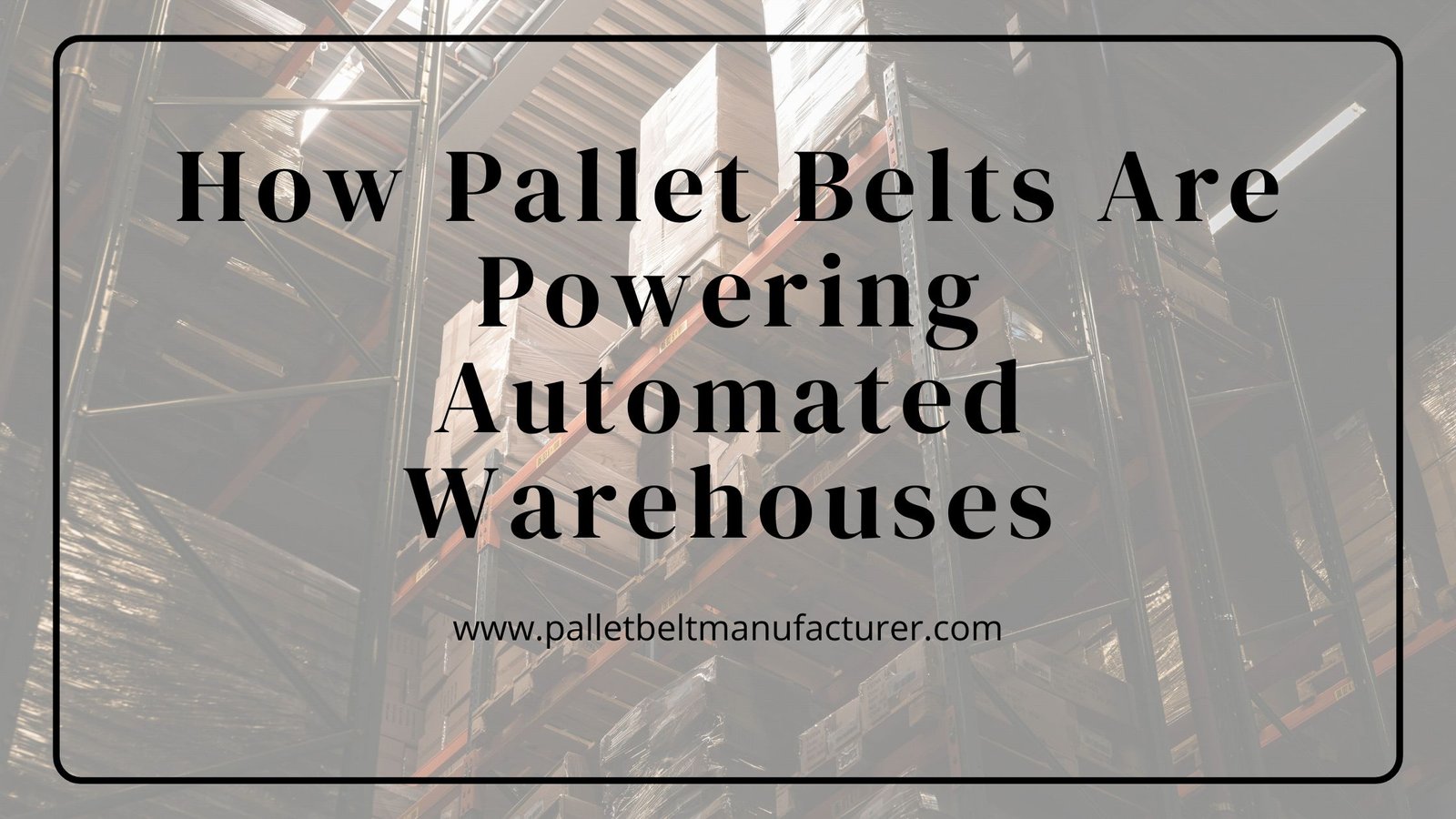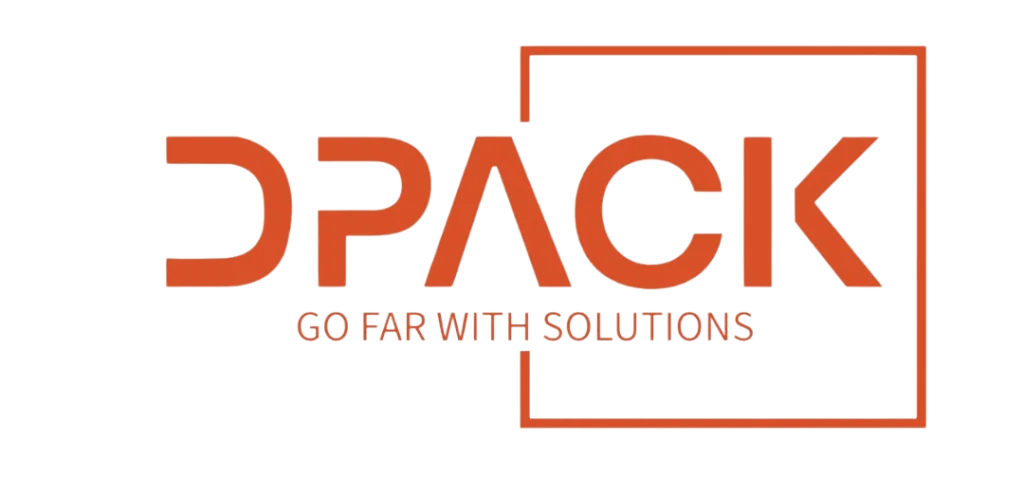
How Pallet Belts Are Powering Automated Warehouses
Introduction: The Hidden Backbone of Modern Warehousing
The world of warehousing is changing faster than ever before. With the rapid rise of e-commerce, Industry 4.0 technologies, and global supply chain disruptions, warehouses are no longer simple storage facilities. Instead, they have become dynamic hubs of efficiency, automation, and precision.
While much of the attention goes to robots, automated guided vehicles (AGVs), and AI-driven inventory systems, there is one silent hero making this transformation possible: the pallet belt.
At first glance, pallet belts may seem like a simple component, but in reality, they are the backbone of automated warehouses, enabling the seamless movement of goods, reducing downtime, and ensuring efficiency. Whether integrated into conveyor systems, vertical lifts, or robotic palletizers, pallet belts are responsible for ensuring the flow of goods is smooth, reliable, and safe.
As a leading Pallet Belt Manufacturer, D Pack has spent decades innovating and refining this critical technology. In this comprehensive guide, we’ll explore:
- The evolution of pallet belts in warehousing.
- Why they are indispensable for automation.
- Their role across different systems.
- Innovations that are shaping their future.
- Industry-specific applications.
- The benefits and ROI of investing in advanced pallet belts.
- The future of warehouse automation powered by pallet belts.
1. The Evolution of Pallet Belts: From Simple Belts to Smart Systems
Early Warehouses and Manual Handling
Historically, warehouses relied on manual labor and forklifts to transport goods. Movement was slow, error-prone, and dangerous. Belts existed, but they were mostly basic rubber systems with limited durability.
The Shift to Semi-Automation
As global trade increased in the 1970s–1990s, companies started adopting conveyor systems. Pallet belts became central to these conveyors, handling heavier loads with improved strength.
The Rise of Fully Automated Warehouses
Today, with the introduction of robotics, AGVs, AMRs (autonomous mobile robots), and AI-driven systems, pallet belts have become specialized, durable, and highly customizable. They are now designed with features like:
- Antistatic properties.
- IoT-enabled sensors for predictive maintenance.
- Temperature and chemical resistance.
- Food-grade compliance for sensitive industries.
Why Evolution Was Necessary
Without this evolution, warehouses could not have met the demands of modern supply chains—fast delivery, error-free fulfillment, and 24/7 operations.
2. Why Pallet Belts Are Critical for Automation
Automation depends on continuous, precise, and safe movement of goods. Pallet belts make this possible by delivering:
2.1 Smooth Material Flow
- Pallet belts ensure seamless movement across conveyors and AGVs.
- They minimize friction, prevent slippage, and reduce stoppages.
2.2 Load-Bearing Strength
- Heavy-duty belts carry loads up to several tons.
- Ideal for industries like automotive and steel warehousing.
2.3 Safety and Precision
- They handle fragile goods like electronics or glass with care.
- Reduce accidents compared to manual handling.
2.4 Energy Efficiency
- Modern belts consume less energy.
- Lower operational costs in large facilities.
As a Pallet Belt Manufacturer, D Pack focuses on achieving the right balance between strength, safety, and efficiency.
3. Integration of Pallet Belts into Automated Systems
3.1 Conveyor Systems
- The backbone of automation.
- Pallet belts carry goods continuously, enabling sorting, picking, and packing.
3.2 Automated Guided Vehicles (AGVs)
- AGVs use pallet belts for smooth load transfers.
- Ensure precision docking and unloading.
3.3 Robotic Palletizers
- Belts position goods for robotic arms.
- Support stacking and depalletizing at scale.
3.4 Vertical Lift Modules (VLMs)
- Pallet belts move goods vertically.
- Optimize space in high-density warehouses.
4. Innovations in Pallet Belt Technology
Automation demands innovation. Leading Pallet Belt Manufacturers like D Pack are developing cutting-edge solutions:
4.1 High-Strength Polymers
- Stronger than rubber.
- Longer life under heavy loads.
4.2 Antistatic & Conductive Belts
- Prevent electrostatic discharge in electronics warehouses.
4.3 Low-Noise Designs
- Reduce warehouse noise pollution.
- Improve working conditions.
4.4 Temperature & Chemical Resistance
- Cold storage belts withstand -30°C.
- Chemical-resistant belts serve pharma and chemical industries.
4.5 IoT-Enabled Belts
- Embedded sensors detect wear.
- Enable predictive maintenance to reduce downtime.
5. Industry Applications of Pallet Belts
Pallet belts are not one-size-fits-all. They are customized for each industry:
5.1 E-Commerce & Logistics
- Handle thousands of parcels per hour.
- Essential for Amazon-style fulfillment centers.
5.2 FMCG Warehouses
- Transport fragile, packaged goods.
- Food-grade belts ensure hygiene compliance.
5.3 Automotive Warehouses
- Carry heavy components: engines, tires, chassis.
- Require extreme load-bearing belts.
5.4 Pharma & Healthcare
- Sterile, low-vibration movement.
- Used in vaccine and drug supply chains.
5.5 Cold Storage & Agriculture
- Belts resistant to extreme cold and moisture.
- Used for frozen food, dairy, and farm produce.
6. Benefits and ROI of Pallet Belts in Automation
6.1 Cost Savings
- Reduced labor costs.
- Lower accident-related expenses.
6.2 Increased Throughput
- Faster, more accurate order processing.
- Meet e-commerce SLA deadlines.
6.3 Enhanced Safety
- Eliminate risks of manual handling injuries.
- Minimize product damage.
6.4 Predictable ROI
- Example: A warehouse investing in premium pallet belts recovered costs in 18 months due to higher efficiency.
7. The Future of Pallet Belts in Warehousing
7.1 Smart Belts
- AI-powered belts that auto-adjust speed and torque.
7.2 Sustainable Materials
- Belts made from recyclable, bio-based polymers.
7.3 Global Expansion
- Demand rising in Asia, Europe, and the US.
- India poised to be a hub for Pallet Belt Manufacturers.
7.4 Lights-Out Warehouses
- Fully automated warehouses with no human presence.
- Pallet belts will be the invisible power behind them.
Conclusion: D Pack – Powering the Future of Automated Warehouses
As warehouses transition into fully automated ecosystems, pallet belts are no longer optional—they are mission-critical. From e-commerce fulfillment centers to pharma supply chains, pallet belts ensure efficiency, safety, and reliability.
At D Pack, we take pride in being a trusted Pallet Belt Manufacturer, offering:
- Customized solutions for diverse industries.
- Durable, eco-friendly, and innovative belts.
- Reliable partnerships with warehouses across India and beyond.
If you’re ready to take your warehouse automation to the next level, D Pack is your partner for world-class pallet belt solutions.



Comment (1)
Exceptional work. This is very well-researched.